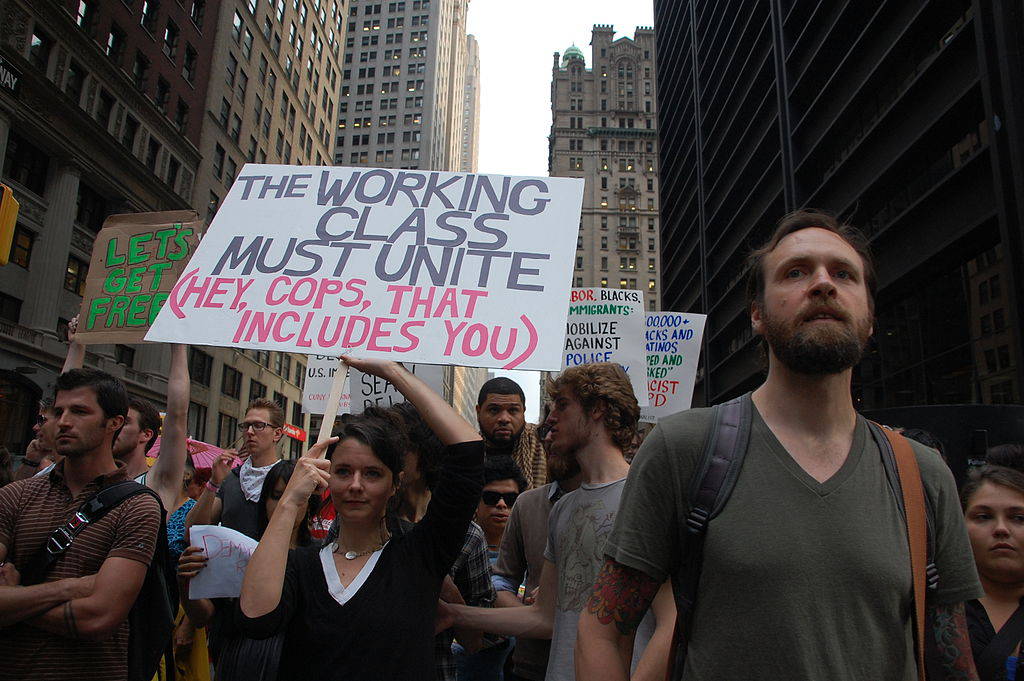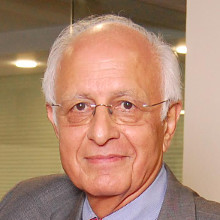["Occupy Wall Street" - Photograph by Thomas Good / NLN under Creative Commons]
That India is an ‘aspirational’ society has become a cliché. The cliché is supported with anecdotes of Indian youth declaring their aspirations to become the next Bill Gates, Marc Zuckerberg, or NR Narayana Murthy, and projections of millions of neo-middle class families wanting to own their own 2BHK homes, send their children to good schools, and lead a good life. However, when aspiration hits against reality, frustration will spill into anger. Anthropologists Edward Fischer and Bart Victor describe the condition that arises when agency exceeds opportunity structures in an economy (and aspirations are thereby thwarted) as ‘frustrated freedom’. Their studies also reveal a combustible connection between frustrated freedom and the demands for fairness in the system. Frustrated freedom combined with anger at unfairness often turns into violence against the established order.
The massive uprising of Patels in Gujarat, Prime Minister Modi’s home state and the site of the ‘Gujarat model’ of development that he had promoted to win the national elections, seems to have caught many by surprise. In a discussion on TV, the night the Army was called in to quell the violence, the predominant theme among the five participants who included two prominent Patels, was the frustrated aspirations of the Patels. While many Patels have done very well economically (in the USA and elsewhere), and politically too (a large proportion of BJP MLAs in Gujarat are Patels), there are too many who cannot find good employment in the state. They feel left too far behind.
In 2005, the World Economic Forum had prepared three plausible scenarios of India’s future. Economies do not operate in socio-political vacuums. Therefore extrapolations of economic growth from only economic factors can be very wrong. The WEF’s scenarists used systems’ thinking methods to include the likely effects of social and political forces on economic growth. Thus their forecasts would be more realistic.
One of these scenarios was called ‘Bollyworld’, into which the scenarists felt the Indian economy was slipping. Two pictures of forces shaping India accompanied this scenario. In one, peacocks are strutting in the middle while little birds are scrambling around them for grain. This picture illustrated the increasing gaps of wealth and incomes in the country with the opening of the economy to market forces. Those with the wherewithal, of capital, education, or political connections, seize the opportunities and become very wealthy. Meanwhile the little birds who do not have these resources are waiting for ‘ache din’, to use a current expression. The other, complimentary picture is a scene of violence, with tigers and wolves prowling in a jungle, and little animals scampering for safety.
The WEF’s scenarists pointed to an increasing tension within Indian society with rising aspirations colliding with a growing sense of unfairness in the system. This tension will spill out in violence, they feared, which could stall the development of further market reforms and slow down economic growth. They suggested that this scenario, with its mixture of glamour and violence, was like a Bollywood movie. Hence they called it ‘Bollyworld’. Their principal fear was that this scenario is unstable. It can easily slip into another one, which they called ‘Atakta Bharat’ (stuttering India), in which growth will begin to decline. Indeed they had forecasted then, that if institutional improvements were not made in good time, the growth rates of around 9% that India would soon experience in the Bollyworld scenario (which it did) would decline towards 6% (as it did too).
The less well off Patels are not the only angry ones. Unrest is simmering and violence increasing among youth in other areas of the country too, for example around the high-growth Delhi region. Here too, young people, who are no longer employed on the land (some with lots of money from selling their land), are turning violent. Add to this youth migrating to urban areas looking for decent livelihoods, which are not easy to find. There they live in slum-like conditions. Their frustrated aspirations are spilling out in violence—against women, road rage, street brawls and even against the police.
While urban violence is increasing, the violence in India’s tribal heartlands has not subsided.
Meanwhile the rich are reported to be getting even richer, with rising stock markets, and soaring executive salaries. The gap between top executive salaries and median salaries in the same companies is reported to have increased ten-fold in the last 15 years. The soaring heights and huge sizes of Indian industrialists’ mansions in Mumbai and London are making news too. The Bollyworld movie rolls on with increasing glamour; and worryingly, with increasing violence too.
Though India’s GDP growth has recovered from the 6% lows at the end of the UPA regime, its sustainability will depend on socio-political conditions in the country, and not merely on ‘economic fundamentals’. Economists acknowledge that economic fundamentals depend on many intangibles: such as the ‘mood’ of markets, the ‘confidence’ of investors, and the ‘trust’ of citizens in the country’s institutions. Among these intangibles, a fundamental one is the perception of ‘unfairness’ in the system.
It is very difficult to find an objective measure of fairness. For example, what should be a fair differential among top earners and median earners in a firm? Some economists dismiss the concern about differentials, which range to over 300% in many firms. They calculate that if the money that these executives earn were to be redistributed to others, incomes of the less paid would rise very little. According to the American Enterprise Institute, if the $6.75 billion compensation earned by the 500 chief executives of the S&P 500 firms were redistributed to their employees, each would get only $69 more.
But the point is not about the additional dollars employees would get. The anger is about differentials and ‘unfairness’. Do the high earners really deserve that much? Are they really that much better at what they do than the rest of us? The people below see the system, which is controlled by the high earners themselves, as an unfair one. And so they become angry at the system. This was a principal cause of the anger that drove the Occupy Wall Street movement. Nurses, firefighters and soldiers could not accept that financial analysts, stock brokers, and hedge fund traders, all of whom were merely making money out of money and keeping a lot of it for themselves, were hundreds of times more worthy human beings than they were. There is something wrong with a system that considers such high earnings and wealth of some as well-deserved, the protesters say, when they work hard and struggle for much less.
One solution for this mal-distribution of wealth and income, according to some of those who feel they are unfairly deprived, is to demand their share through quotas and laws. With this, the political game shifts to a sharing of the pie rather than increasing it. Sadly the Indian system, with reservations on the basis of castes, has gone that way. Now many communities, who are a part of the aspirational middle of India and hardly at the bottom, want their share: the Patels in Gujarat, the Gurjars in Rajasthan, and Marathas in Maharashtra. This is the recipe for Atakta Bharat, in which the political system is bogged down with claims by many sub-castes and communities for their shares, and the economy is stifled with demands for grabbing more rather than making more.
Capitalism is defended by John Plender, in his book, Capitalism: Money, Morals, and Markets, as the best among alternative systems. He cites Winston Churchill’s similar defense of democracy as, while not a good enough system of government, nevertheless the best among alternatives. These are unsustainable defenses. The people protesting against the system are not demanding the replacement of capitalism and democracy—at least not yet. They want democracy and capitalism to be improved—to become more inclusive and more fair. Therefore, defending the present capitalist system as it is, by pointing out that many have come out of poverty and that average incomes have risen with it, is not a satisfactory defense.
People want the system to be more fair than they perceive it to be. Therefore it must be reformed. There must be good dialogues soon with stakeholders about the shape of the reforms; or expect more protests and violence.




Debashis Bhattacharya on Oct 11, 2015 1:52 a.m. said
Well the Santiniketan bag, panjabi, pyjama donned bespectacled gentleman has been saying this for decades now. Only the units have changed